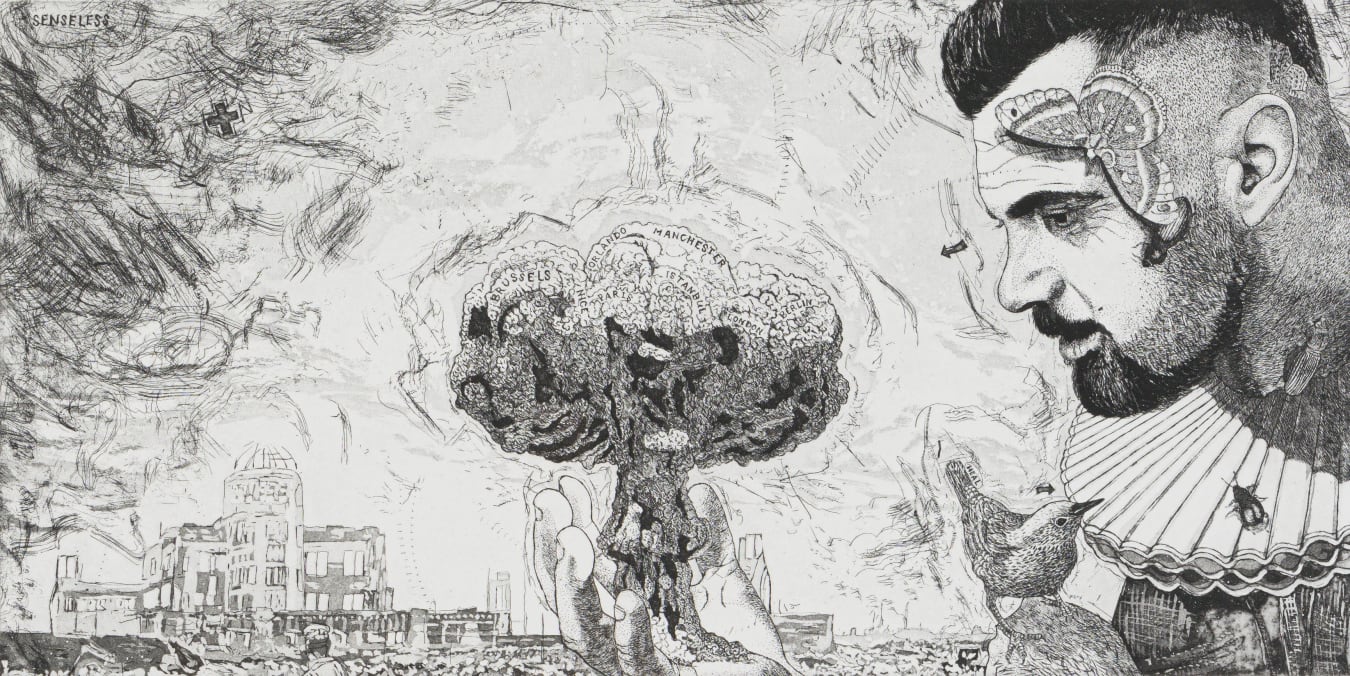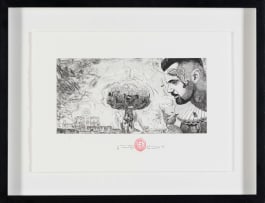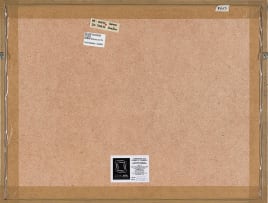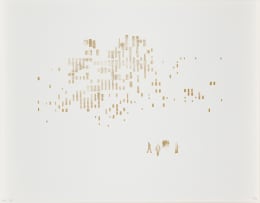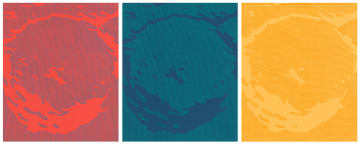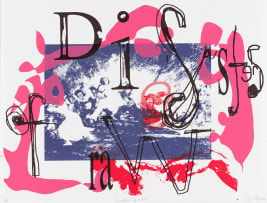SANAVA x Cité Internationale des Arts Benefit Auction
Timed Online Auction, 7 - 21 February 2023
SANAVA x Cité Internationale des Arts Benefit Auction
Incl. Buyer's Premium & VAT
About this Item
signed, dated 2017, numbered 14/20 and inscribed with the title in pencil in the margin, imprinted with the artist's stamp and embossed with the Artist Proof Studio chopmark
Notes
Artist's Statement
My last etching in this series Bloodroots V (Apocalypse) comments on the acts of terror in many countries over the past few years. I personally am disturbed by the death of so many innocent people. During the Paris attacks in 2015, I lived and worked as an artist-in-residence at the Cité Internationale des Arts in this magnificent city and witnessed terror firsthand - Paris went completely quiet for a day and an eerie feeling filled in air.
In light of the above, it is important to understand that religion plays an important role in the mechanisms of Colonialism and Apartheid, not to mention the more recent terror attacks globally.
"Not so very long ago, the earth numbered 2,000 million inhabitants, that is 500 million human beings and 1,500 million natives. The former possessed the Word; the rest borrowed it. Between the former and the latter, corrupt kinglets, feudal land-owners and an artificially created false bourgeoisie served as intermediaries. In the colonies, the naked truth revealed itself; the mother countries preferred it dressed; they needed the natives to love them, like mothers, in a way. The European elite set about fabricating a native elite; they selected adolescents, marked on their foreheads, with a branding iron, the principles of Western culture, stuffed into their mouths verbal gags, grand turgid words which stuck to their teeth; after a brief stay in the mother country, they were sent back, interfered with. These living lies no longer had anything to say to their brothers; they echoed; from Paris, from London, from Amsterdam we proclaimed the word 'Fraternity!' and, somewhere in Africa, in Asia, lips parted: '…nity'. It was a golden age".
- Jean-Paul Sartre
In an attempt to understand the powerful functioning of religion as a possible antecedent to terror, it is firstly important to understand the word "fraternity". A "fraternity" could be defined as "a group of persons associated by, or as if by ties of brotherhood"; "group or class of persons having common purposes, interests, etc.; "an organisation of laymen for religious or charitable purposes; sodality"; "the quality of being brotherly; brotherhood: liberty, equality, and fraternity". In fairness, it needs to be stated that according to The Guardian (online): "since 2001 religious extremism has overtaken national separatism to become the main driver of terrorist attacks around the world, according to the Global Terrorism Index". The main culprit is hence not religion per se, but rather religious extremism.
However, it is crucial to note that what many seem to forget is that religion, as most of us know it, is a mere man-made construct. Under this light, religion and atheism are both human designs and are, therefore, very similar in character. That both can act in aggressive and cruel ways is no surprise, as each emanates from the same source: religion, atheism and terrorism are all products of humanity's primary and, at times, violent nature.
In light of the above, and rather than providing clear and absolute explanations for the work, I would again like to pose a few questions to the viewer: Why is the almost serenely calm main subject in this work cradling (an image of) a nuclear explosion in his hand? What is the meaning of the bird and insects sitting on the man's hand and face? What is the significance of the small arrows in the work?
In a reading of this etching it is important to research the meaning of concepts such as 'dystopia', 'apocalypse' and 'the human condition'.
Cité Experience
I am undoubtedly one of the artists who has benefitted the most from a total of 10 artist's residencies (AIR's) at the Cité des Arts since 1994. When putting all these AIR's together, I have lived and worked in Paris for a total of nearly two years of my life. Paris soon became my most loved city in Europe. My AIR's have also allowed me to travel extensively in Europe, especially for short visits to other European countries. London and especially Venice (for the Venice Biennial) became firm favourites. Not only did many new works see the light in the City of Light, but I have also forged lifelong friendships and exhibited my work in Paris over the years. During my first few visits I became close to Mme Simone Brunau, wife of the founder of the Cité, Monsieur Felix Brunau. At the end of my first AIR in 1994, I mounted a solo exhibition in the Salle Edouard Sandoz, the gallery at the Cité des Arts at the time. My most recent exhibition during a two-month sojourn at the Cité des Arts (October and November last year in 2021) allowed me to show work on an exhibition entitled Planet Platforme Earth at Gallery 193 close to the Bastille. The exhibition was organised and curated by Judy Holm, the founder of The Global Arts Awards. At this event, we exhibited as Vortex, a collaboration with my friend and fellow artist Shui-Lyn White, who was also my guest at the Cité des Arts for the two months. It is impossible for any serious artist not to benefit from a residency at the Cité Internationale des Arts. To live and work in an exciting city such as Paris is, in itself, a massive privilege.
View all Christiaan Diedericks lots for sale in this auction
